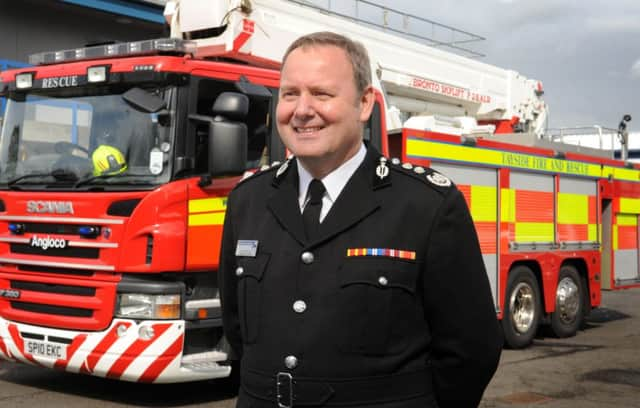Part-time fire service on its knees, MSPs told


The Chief Officer of the Scottish Fire and Rescue Service, Alasdair Hay, admitted there is a “long-standing problem” and it is one of the biggest issues the national fire service faces.
John Duffy, Scottish secretary of the Fire Brigades Union (FBU), said in some rural areas appliances were left unused because there were not enough people to staff them.
Advertisement
Hide AdAdvertisement
Hide AdAbout 40 per cent of Scotland’s firefighters are retained, meaning they have other jobs but are on call to respond to emergencies.
Mr Duffy said modern life and levels of commuting had “obliterated” the retained service.
“The retained duty system is on its knees,” he told the Scottish Parliament’s justice committee.
“Large parts of the country don’t have fire cover, how do we address that? The single service is now trying to tackle this issue, but it should have been tackled years ago.”
He added: “If you do a check on any given day and see how many appliances aren’t being used because we can’t get a crew, it is staggering.
“You only need to consider how many people commute in and out of the bigger towns and cities. Whilst you’re driving there or back, you’re not available for a fire call.”
Like the police, the fire and rescue service merged from eight regional services to a national model last year. The new organisation recognises the challenge in ensuring there is a robust retained service, even if it is unsure of the solution.
Pat Watters, chairman of the Scottish Fire and Rescue Service Board, told the committee: “I would agree with what John Duffy says. It’s probably one of the biggest priorities facing the service at the present time, we can’t massage it anymore.”
Advertisement
Hide AdAdvertisement
Hide AdHe said there was no question that the service would continue to rely on retained firefighters in the future.
“We need that part of the service, but we need it working,” Mr Watters said. “There’s tremendous commitment from people, it’s not the willingness that’s not there, it’s the availability we’ve got to look at.”
A working group has been set up to look at ways of reinvigorating the retained duty service.
Mr Hay said one thing that needed to change is the way retained crews are paid.
“I don’t think there’s an easy solution, but part of it is the award system,” he said.
“For retained firefighters, the more fires they go to, the more they get paid. That’s going against our number one aim, which is to reduce the numbers of fires happening in the first place.”
He said that 90 per cent of Scotland was reliant on retained firefighters to keep people safe, but he insisted no-one had suffered as a result of the current weaknesses in the system.
“Thankfully I don’t know of any serious consequences,” Mr Hay said.
Advertisement
Hide AdAdvertisement
Hide Ad“But we have a system in place where we know what is available and where around the country. So if we know they’re unavailable and something goes wrong, quite rightly, people would say, ‘What did you do about it?’”
Asked how long it would take for the review of the retained duty system to report back, Mr Hay replied that the review could take years.
However, recommendations that come out of it could be implemented far sooner, he added.